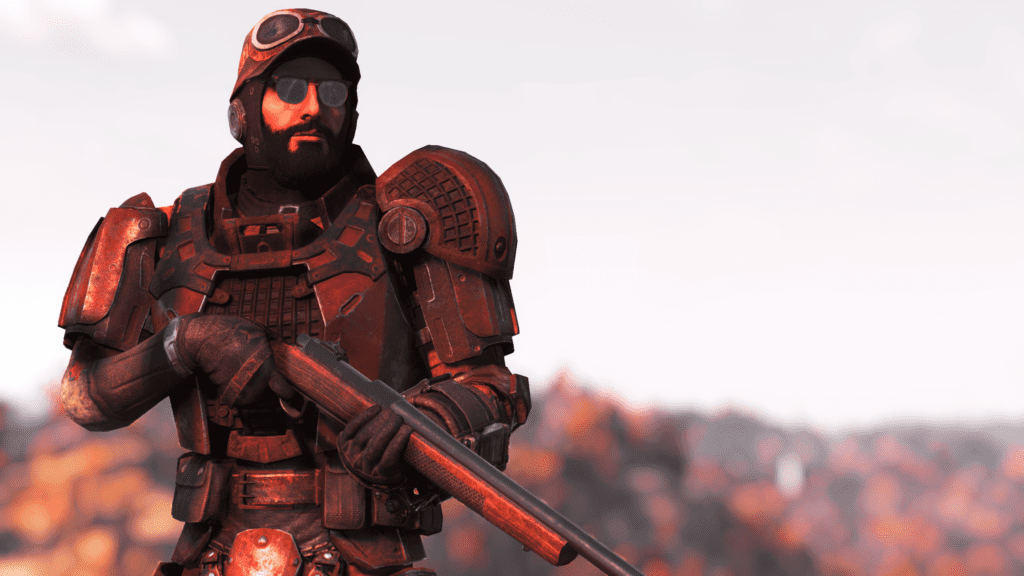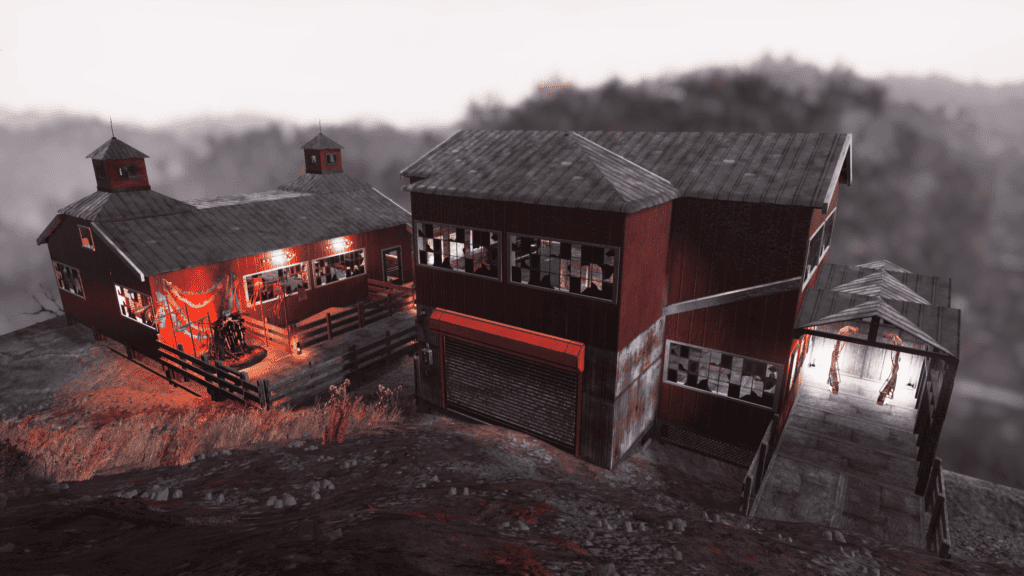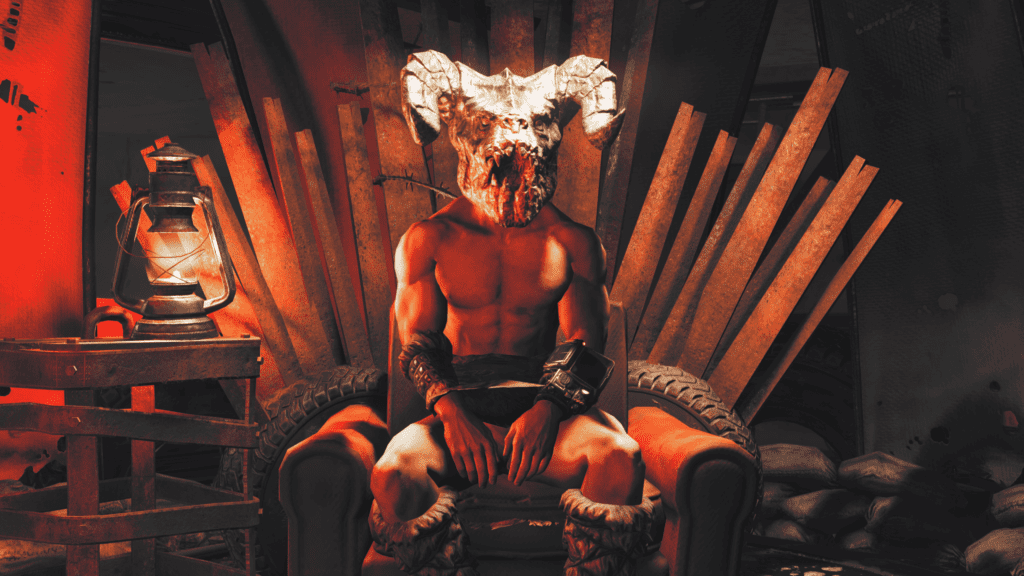It wasn’t difficult to first part ways with Fallout 76. Long before I had pushed my character level into the triple digits, my days in the heart of West Virginia had become fairly predictable. Where excursions across the Wasteland were once tinged with the allure of adventure, soon after they became burdened by an overexposure to a world that was breathtakingly hollow and inescapably flawed. No activity in the game offered any respite from the litany of technical deficiencies that plagued it—and nothing was to be excluded when new problems easily nestled into a bedrock of inherited issues. Appalachia was aflame, and the only thing being invested in combatting the roaring inferno was a few pails of water at a time.
Completing the main narrative was a test of endurance in itself, but after the majority of the game’s structured content had been successfully navigated, the post-game soon beckoned. By the time that I had sampled everything that the Wasteland had to offer, all that remained was the more personal quest of self-improvement. Dictated entirely by a loot system that pitted random chance alongside bottomless reserves of unusable vendor fodder, cobbling together a functional set of gear was as frustrating as it was joyless. And with nothing in place to facilitate any semblance of fulfilling progression, the most efficient way of circumventing the game’s systems soon became the only way to ensure that time spent wasn’t explicitly time wasted. This was the act of launching a nuclear strike at the Whitespring Golf Club and clearing out all of the heavily irradiated monstrosities that arose from the impact crater. Once the last quest marker had disappeared from your wrist-mounted PipBoy, this was all that Fallout 76 had left to offer: an unsightly explosion, a meagre horde of enemies, and a server-wide scramble for a handful of loot.
The Wastelanders update then was Bethesda’s chance to deliver a statement of intent. After more than a year of middling content updates and the addition of an entirely underdeveloped battle royale mode, this first major expansion to the game aimed to rectify its most egregious omission and finally bring human NPCs back into the fold. The only company that you could rely on before then was that of your fellow players, but due to the lack of social systems in place, wanton gunfights regularly triumphed at the expense of any meaningful cooperation. With Wastelanders, Bethesda touted “a new beginning” for their much maligned title—it was difficult to take them at their word. There had been no end to the controversies that had dogged 76 during my time away from it, so it was unsurprising to see that even efforts at merchandising the game had shared in the suffering. Outside of virtual Appalachia, purchasers of the collector’s edition were being shortchanged by the subpar quality of its main attraction—the WestTek canvas bag—which had been supplied made of a much cheaper and far more unappealing plastic. Elsewhere, an official replica of the in-game T-51 helmet was recalled due to a tendency to harbour mould, while shipments of Nuka Dark rum were criticised for their multiple delays, inflated price-point and shoddy manufacturing. A short time after Fallout 76 originally released, it was the duplication of specific high-power weapons that played havoc with future balancing efforts. Since then, the game has been blighted with a new plague every couple of months, with waves of player-on-player theft, glitches to surpass the carry weight cap, and exploits that unearthed previously unreleased content all pushing back against the limits of its wretched economy. And throughout all of that, only the player-led blackmarket ever seemed consistently healthy enough to thrive.
* * *
Within a day of setting foot back in Appalachia, I had stumbled across almost a hundred item plans stuffed idly into a train station locker. A bit of research told me that these items were surplus from the last major duplication wave to have hit the game, and here I was, unknowingly harvesting the spoils several months down the line. Not too long after, and it became clear that due to environmental instancing, playing the expansion in tandem would mean having to complete every mission in the game twice over. Rather promptly, the tone for the entire experience had already been set. The goal in Wastelanders is to ally with one of two factions: the Settlers of the Foundation, or the Raiders at the Crater. Whatever group you decide to swing your weight behind will then aid you in cracking open Vault 79, with its mountainous stacks of gold bullion set to serve as a new centralised currency for a progressive Appalachia. The single major choice that you’re faced with here is deciding which one of the two groups is better suited to your ideals. There is no way to experience both perspectives with a single character and you can’t remain a neutral party. After reaching that exact point of divergence, I may as well have flipped a coin. Both sides leave such a pitiful impression of themselves that it’s often difficult to even tell them apart. In fact, most of what you can glean from them is evident in how they choose to decorate their bases. The Settlers keep things uniform and try to make every last bit of scrap in some way beneficial. The Raiders meanwhile delight in littering their compound with pre-war vehicles and mounted monster corpses. The major problem here is that the returning textual choice system completely exposes the lack of depth in their characterisation. And on top of that, as things like role-playing and decision making become more readily emphasised as key parts of the experience, poor writing and voice acting garners that much more unwanted attention. Every conversation you engage in, regardless of the context, will only ever see you chase responses in circles as the characters in front of you repackage the same fragments of information over and over again. It’s still plenty of fun to watch as NPCs react to the occasional dialogue choice berating them, but there’s rarely, if ever, a worthwhile reason to pore over every available option. A single, conclusive outcome is the only thing that’s ever actually attainable, no matter how many skill-checks that you succeed in executing.
One of the biggest missed opportunities of this multiplayer Fallout is that, in the eyes of the NPCs, you are still a sole survivor. Playing through Wastelanders as one half of a duo felt like I was leading along an imaginary friend, with there never being any opportunity to ask for the opinion of my partner mid-conversation, or defer to them any necessary action. With every bit of extended dialogue holding so little weight, along with the fact that we’d have to endure everything twice over, the only piece of useful information we retained in between attempts was which options brought the conversation to an end in the quickest manner. There are certain protective measures to consider, of course. You wouldn’t want to team-up with a player you weren’t familiar with and have them select the wrong choices. At least in that case, being able to see the specific preferences of other players could help you settle on a decision. With no delegation between teammates, rarely does this multiplayer game do anything to foster cooperation except when the bullets start flying. When it came to tackling battalions of robots, we were in perfect sync—my partner ran in close for the melee attack, while I peppered foes with shots from afar. But when the situations presented themselves to put down our weapons and talk it out, there was never any chance of achieving a similar symbiosis. The best we could muster was agreeing that another minute of banal, lifeless dialogue was better off avoided.
* * *
The moments in which Wastelanders defies its own expectations are as surprising as they are infrequent. Without a doubt, it’s the Wayward quest-line which is the highlight of the entire expansion, with this reintroduction to textual decision making completely stealing the spotlight. Even at its best, Wayward could still only offer glances at what might have been. Inflating much of its runtime was the same generic objective chasing and bullet throwing, but it was easy to develop a soft spot for it when measured against everything else that Wastelanders had in its locker. Myself and my co-op partner achieved two completely different outcomes for one, though I can’t say that I would’ve been so eager to swap the barroom shootout that occurred in my finale for anything else. Next to that, I could certainly appreciate the vision behind much of its design, restricted as it was. Solving the problems of Wayward required a little bit of ingenuity, and the pushback against the game’s typical quest structure was immediately noticeable. But just as noticeable was how this series of quests and their undoubted potential stood completely alone.
There was little that Wastelanders did to positively affect the gameplay loop, either. Still all too common was the process of besting legendary enemies only to be awarded with nothing of use, or hopping between what few daily event quests were lucky enough to be populated. The sole exception here was the seasonal Fasnacht event, which brought the entire server together once an hour in order to aid in defending a dozen robots from an onslaught of creatures. It was an enjoyable way to break things up, but the three week period that it was live came to a close all too quickly. What remained after the conclusion of the main quest-line in Wastelanders wasn’t a world populated by humans to see and talk to, but voiceless figures that had been resigned to set dressing. And the few that did want to talk had just as little to say as those who didn’t. It’s remarkable that the introduction of settlers hasn’t been able to alleviate the pervading sense of loneliness that the game exudes. To some extent, it makes perfect sense. You are one of the only few to have successfully escaped Vault 76 after all—the blue and gold clad corpses that you’ll encounter throughout your travels can attest to that. Though the nuance of thematic consistency and narrative cohesion isn’t something that Fallout 76 dedicates much of its energy towards preserving. Like the occasional run-in with a Protectron trader or a Mr.Handy mailman, they’ll say their piece before fading away in the distance, and soon after, you will have likely forgotten that you ever met them in the first place.
The common thread in all of this can be found in the belated implementation of the dialogue system. If Fallout 76 had been originally built around textual choices and multiple outcomes, then maybe it wouldn’t sit so awkwardly on top of the game’s existing framework. Now, the consequence of omitting NPCs from the release build seems so much more impactful when considering the limited ways in which it can evolve heading into the future. There’s only a single major point of divergence in Wastelanders. Everything else, from the insignificant skill-checks to the conversational dead ends are products of the fundamental misinterpretation of the game that has stuck with it throughout development. There’s no reprieve to be found in the expansion, nor any answers to the many conundrums that it has posed. Chief among them is the question of its very existence. This is a multiplayer game with limited cooperative capabilities, an RPG that shutters creative character builds behind a reductive skill system, and a survival experience where your only objective is to placate a rapidly depleting hunger and thirst meter. Lore inconsistencies still reign, and technical deficiencies still dictate much of what you can experience. Not just stunted by a lack of direction, Bethesda’s first attempt at bringing multiplayer to its longest-serving and most easily recognisable series is an unequivocal, unmitigated disaster. Rather than providing the game with a much needed second wind, Wastelanders only manages to tarnish its new content with pre-existing problems and a legacy of ill will. Awaiting new players is an awkward, frustrating and often confusing experience that struggles to break free from its own self-imposed restrictions. And for those already familiar with its landscape, all that it can possibly offer is a painstaking reintroduction to its every renewed flaw. Though the hills of Appalachia may be swimming in bullion, what’s left to salvage out there is anything but golden.


